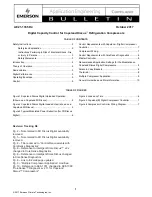
Part-load operation (on-load operation at re-
duced speed,, only for
RS
compressors ) [on-
load operation]
Off-load [Off-Load]
Observations during operation
During operation the compressor must be regu-
larly checked to ensure leak-tightness of the oil cir-
cuit. With water-cooled systems, this inspection is
extended to the cooling water circuit.
Condensate drain
The condensate drain on the aftercooler is actu-
ated via sensor control.
Switching off
1. Press stop button < O > on the control panel.
– The compressor runs on for 30 seconds
(soft stop).
Emergency-stop
The compressor can be rendered safe in danger-
ous situations using the emergency-stop pushbut-
ton.
Emergency-stop pushbuttons are attached:
•
on the compressor control panel
•
optionally in a control room (control centre)
Using emergency-stop
1. Press the <Emergency-stop> pushbutton.
The compressor is placed in a safe condition.
2. Rectify the fault that was the cause of the
Emergency-stop.
See the "Troubleshooting" chapter.
3. Unlock the <Emergency-stop> pushbutton.
Turn the pushbutton anticlockwise.
4. Set the compressor in operation.
See section "Commissioning after a fault" in the
chapter "Commissioning and operation".
6.3
Routine commissioning
Routine commissioning is for example commis-
sioning after maintenance.
1. Open the shut-off valves between the compres-
sor and compressed air network.
2. Thereafter proceed as described in the section
"Initial commissioning".
6.4
Commissioning after a long
shutdown
If commissioning after a long shutdown, contact
Gardner Denver.
6.5
Commissioning after a fault
NOTICE
Material damage
Avoid switching the compressor on multiple
times without rectification of the fault as this can
lead to considerable mechanical damage.
➯
Only switch the compressor back on after
the fault is rectified.
Re-commissioning after a fault (automatic
switching off)
Faults are displayed in the display menu "Fault
log".
1. Switch main switch off and secure to prevent
switching back on.
2. Rectify the fault.
See the "Troubleshooting" chapter.
3. Switch on the main switch.
4. Acknowledge fault in the fault log.
5. After acknowledgement, the message [Ready
to Start] appears on the display, provided no
other fault exists.
6. Press the start button < I > on the control
panel.
– The compressor is switched on.
– The compressor runs in automatic mode.
See the operating sequence description in
the section "Control (automatic operation)"
in the chapter "Design and function".
















































